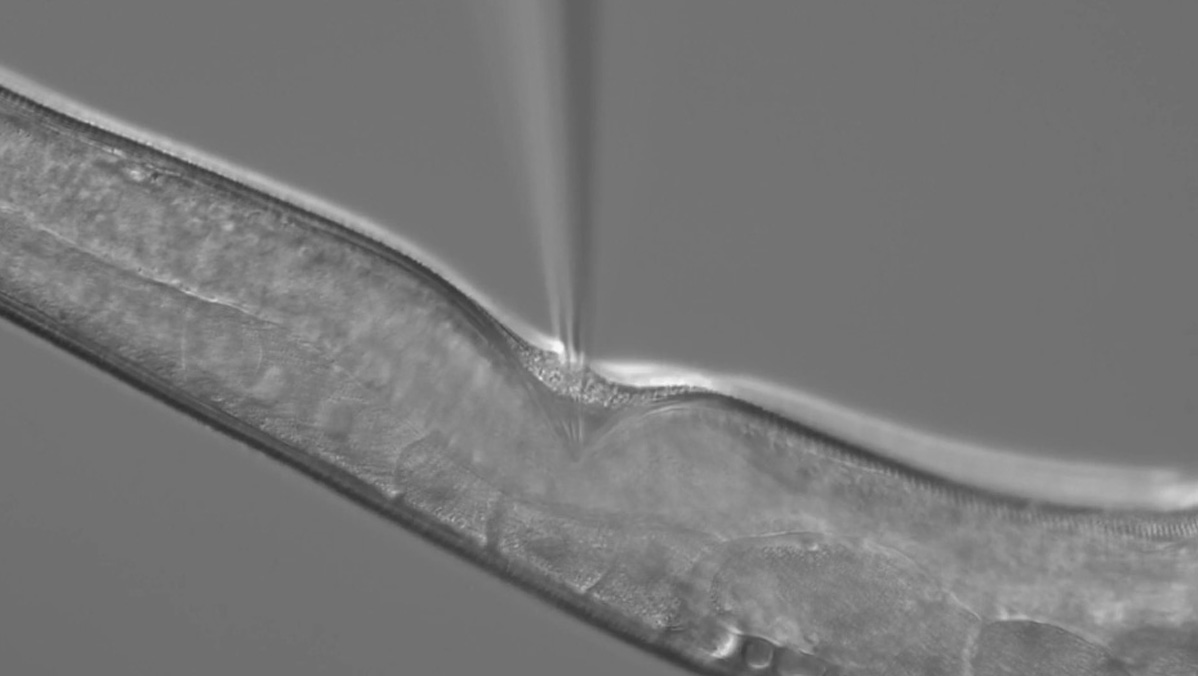
New Technique TARDIS Makes Gene Editing at Scale Possible in Animals
November 9, 2022| |
Researchers at the University of Oregon have developed a new gene editing technique that compresses what previously would have taken years of work into just a few days, making new kinds of research possible in animal models. The new technique will allow researchers to compare many versions of a gene in experiments and look for mutations that lead to specific traits and tracking their evolution over time.
The research team piloted their technique in the tiny worm Caenorhabditis elegans, a popular species for biology research. To speed things up, the researchers designed a way to compress hundreds or even thousands of possible mutations into a single “library.” In this "library," each book is a small snippet of the genetic code, meaningless and nonfunctional on its own. Each snippet fits into an engineered gap in the gene that's being targeted. That design means that instead of individually injecting many individual worms with different versions of a gene, researchers can inject the whole library of mutations into one worm.Then, when the worm reproduces, the library expands.
The result is a collection of worms with different randomly selected genetic mutations. The new technique is called TARDIS, a playful nod to the fictional Doctor Who's space-and-time-traveling police box, stands for Transgenic Arrays Resulting in Diversity of Integrated Sequences. Similar to the fictional TARDIS, the worm “is bigger on the inside,” and contains a lot of extra genetic material.
For more details, read the article in AroundtheO.
| |
You might also like:
- Japanese Consumers Prefer Gene Editing Applications on Vegetables over Livestock
- FDA Clears Marketing of Genome-Edited Beef Cattle
- Pocket K No. 54: Plant Breeding Innovation: CRISPR-Cas9
Biotech Updates is a weekly newsletter of ISAAA, a not-for-profit organization. It is distributed for free to over 22,000 subscribers worldwide to inform them about the key developments in biosciences, especially in biotechnology. Your support will help us in our mission to feed the world with knowledge. You can help by donating as little as $10.
-
See more articles:
-
Gene Editing Supplement (November 9, 2022)
-
Research and Tools
- Study Pinpoints Enzyme Linked to Rice Plant Height
- Genome-Edited Chickens and Ducks Produced Using Non-PGC Method
- New Technique TARDIS Makes Gene Editing at Scale Possible in Animals
- CRISPR-Cas13a Shows Efficient Phage Genome Editing
- Rice University Research Group Develops Technique to Find Large Deletions and Anomalies in ‘On-target' CRISPR-Cas9 Editing
-
Public Acceptance and Engagement
- Public Understands CRISPR Better with Infographics and Videos
-
Read the latest: - Biotech Updates (October 15, 2025)
- Gene Editing Supplement (September 24, 2025)
- Gene Drive Supplement (February 22, 2023)
-
Subscribe to BU: - Share
- Tweet

